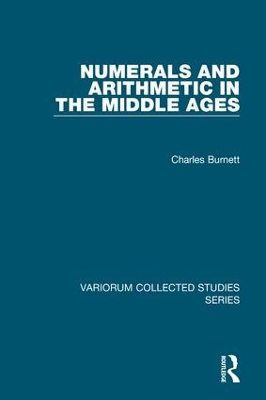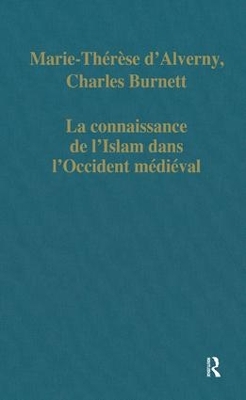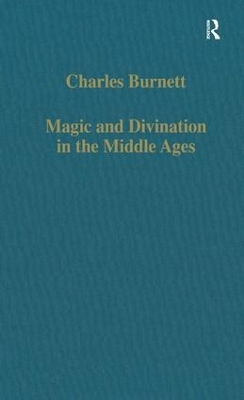Variorum Collected Studies
3 total works
This volume, the third by Charles Burnett in the Variorum series, brings together articles on the different numeral forms used in the Middle Ages, and their use in mathematical and other contexts. Some pieces study the introduction of Hindu-Arabic numerals into Western Europe, documenting, in more detail than anywhere else, the different forms in which they are found, before they acquired the standard shapes with which we are familiar today. Others deal with experiments with other forms of numeration within Latin script: e.g., using the first nine Roman numerals as symbols with place value, abbreviating the Roman numerals, and using the Latin letters as numerals. The author discusses how different types of numerals are used for different purposes, and the application of numerals to the abacus, and to calculation with pen and ink. The studies include the critical edition of several Latin texts.
La connaissance de l’Islam dans l’Occident médiéval
by Marie-Therese D'Alverny, Charles Burnett, and Marie-Therese D'Alverney
Published 30 June 1994
This volume, the second in the series of Marie-Thérèse d’Alverny’s selected articles to be published by Variorum, gathers the majority of her studies on the understanding of Islam in the West from the early Middle Ages until the mid-13th century; some related works will be included in a further selection. In the 12th century, as she shows, a serious effort was for the first time made to learn something of the reality behind the fabulous and scurrilous stories about Muhammad and Islam. A collection of translations from Arabic, including the Koran, was commissioned in 1140 by Peter the Venerable of Cluny, and d’Alverny found the manuscript in which his secretary wrote these out. This discovery led her to explore other translations into Latin of the Koran and other Islamic texts, to identify the work of the translators Hermann of Carinthia, Robert of Ketton and Mark of Toledo, and to depict the milieu in which this work was possible.
After discussing the terminology of talismanic magic (or necromancy) and its position in divisions of science in the Middle Ages, this book traces the history of talismanic texts from the Classical period through the Arabic world to the Latin Middle Ages. The principal authorities are Hermes and Aristotle, and the search for the 'secret knowledge' of these ancient sages is shown to have been a catalyst for the translating activity from Arabic into Latin in 12th-century Spain. The second half of the volume is devoted to examples of the kinds of divination prevalent in Arabic and Latin-reading societies: chiromancy, onomancy, scapulimancy, geomancy and fortune-telling. The book ends with advice on when to practice alchemy and a prophetic letter of supposed Arabic provenance, warning of the coming of the Mongols. Several editions of previously unedited texts are included, with translations.


